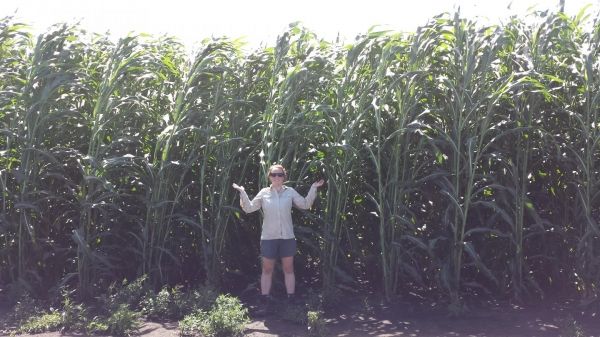Large perennial grasses like miscanthus are a primary target for use as bioenergy crops because of their sustainability advantages, but they take several years to establish and aren’t ideal for crop rotation. Maize and other annual crops are easier to manage with traditional farming, but they are tougher on the environment.
Energy sorghum, a hefty annual plant with the ecological benefits of a perennial, may combine the best of both crops.
A study by researchers at the U.S. Department of Energy (DOE) Center for Advanced Bioenergy and Bioproducts Innovation (CABBI) found that energy sorghum (Sorghum bicolor) behaves more like miscanthus in the way it efficiently captures light and uses water to produce abundant biomass. It has higher nitrogen emissions like maize, but researchers believe careful fertilizer management could reduce those levels.
The study, published in Global Change Biology Bioenergy, offers an important first look at how energy sorghum compares to maize and miscanthus grown in the Midwest, providing critical data for biogeochemical and ecological models used to forecast crop growth, productivity, and sustainability. The study was led by former CABBI Postdoctoral Researcher Caitlin Moore and her advisor, Carl Bernacchi, Plant Physiologist with the U.S. Department of Agriculture’s Agricultural Research Service and Adjunct Professor of Plant Biology and Crop Sciences at the University of Illinois Urbana-Champaign.
Read more at: University of Illinois at Urbana-Champaign Institute for Sustainability, Energy, and Environment
CABBI researcher Caitlin Moore, standing here in an Illinois sorghum field, was a lead author on a study that found annual energy sorghum behaved more like miscanthus than maize in the way it captured light and used water to produce abundant biomass. The work signals the plant's potential as a sustainable bioenergy crop. (Photo Credit: Center for Advanced Bioenergy and Biofuels Innovation (CABBI))


